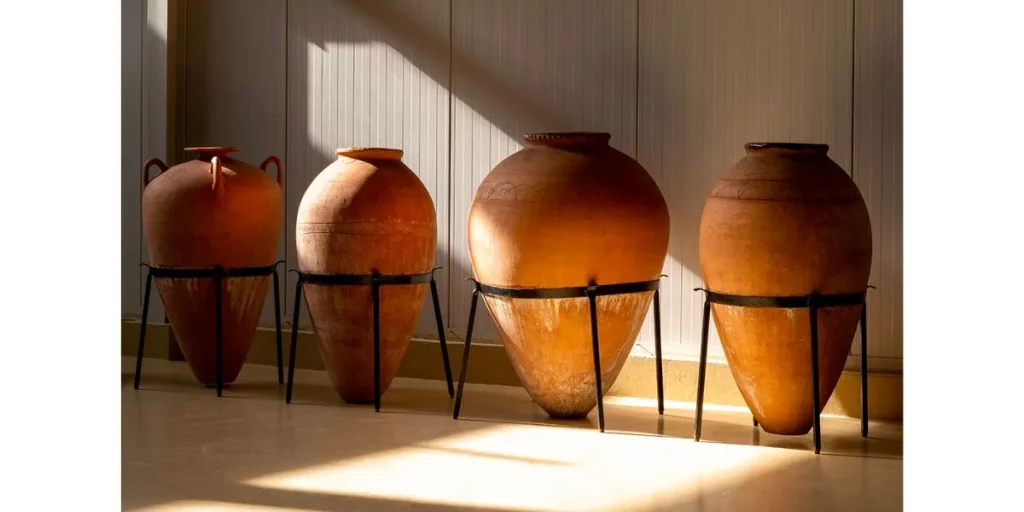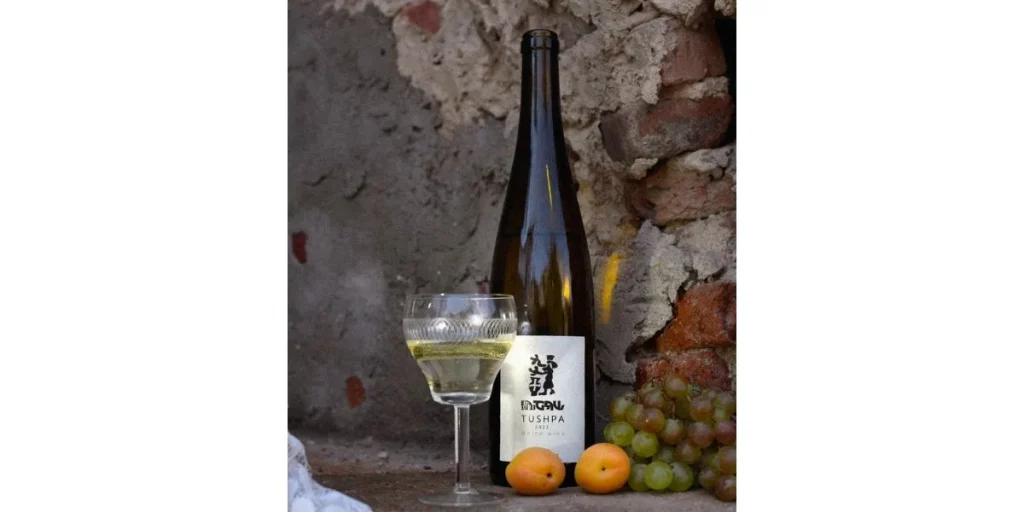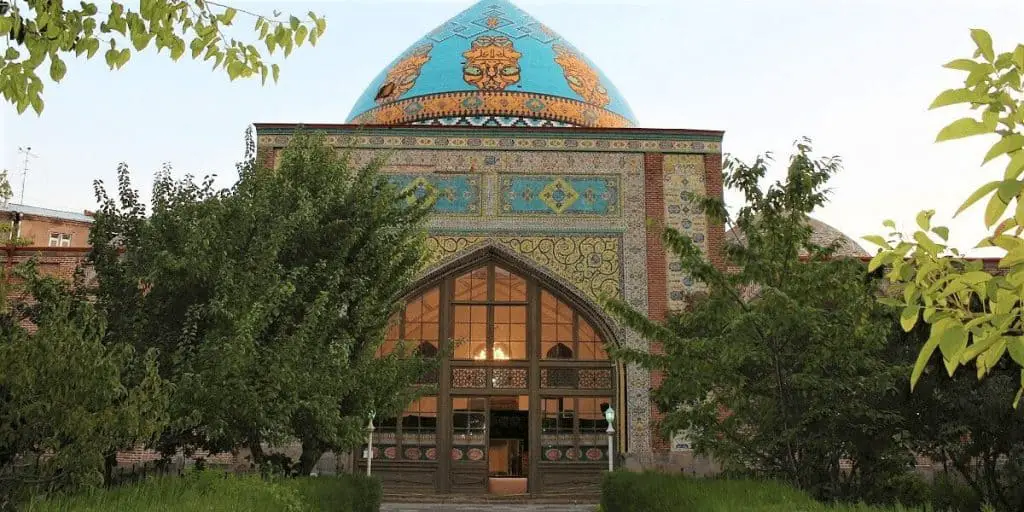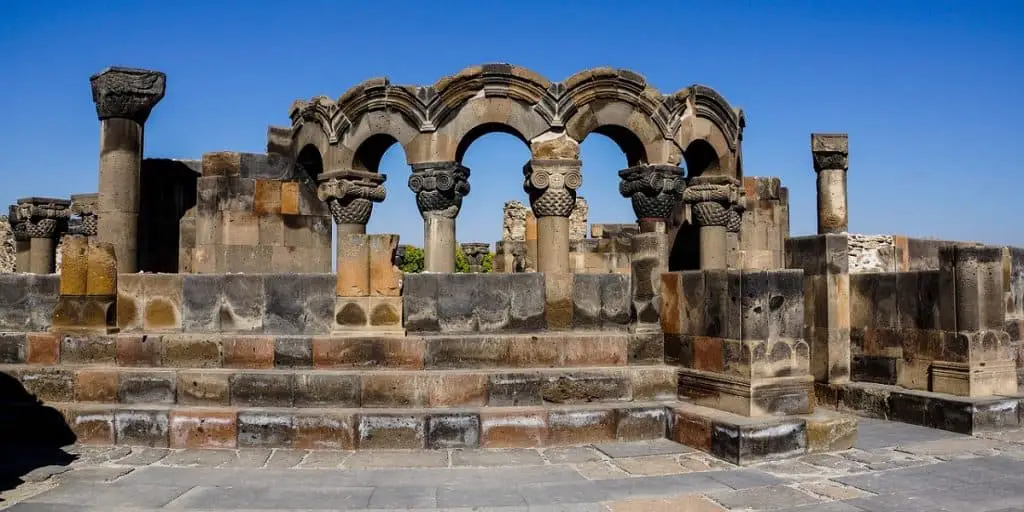When you think of wine, countries like France, Italy, and Spain come to mind. However, Armenia is a country that has a long and rich history of winemaking that predates many European wine-making traditions. After almost a century of not much investment in the field, today the situation has changed. Armenian wine regions are gaining recognition for their unique grape varieties, wine-making techniques, and richly flavored wine. This blog post will explore the fascinating world of Armenian wine regions. So let’s dive into it together.
Armenian wine regions:
- Armavir
- Ararat
- Vayots Dzor
- Aragatsotn
- Tavush
Before we explore different wine regions one by one, let’s look at the history of winemaking in Armenia and the industry’s current resurgence. Don’t hesitate to ping me on Twitter or Instagram with #ArmeniaTravelTips if you think I missed something important, or if you want to share your own wine tips with me.

History of Winemaking in Armenia
Archaeological evidence suggests that Armenia’s winemaking predated any other known region. They found evidence in 2007 in an ancient winery of the Areni-1 cave in Vayots Dzor region, proving Armenia’s ancient winemaking history.
If you go to a farmer’s house in a village in Vayots Dzor or Ararat region, you may still find large clay vessels called “karas” where farmers crush and ferment grapes. They found the remains of such clay vessels in Areni-1 together with remains of grape seeds. This is pretty concrete evidence of the earliest known wine production in the world. Today, the cave is a popular site attracting many travelers both internationally and locally.
Even though wine-making has very ancient roots in Armenian culture, modern history hasn’t been very favorable to this craft in Armenia. The 20th century was challenging for Armenian winemaking. Particularly, Soviet-era collectivization and restrictions on winemaking practices imposed some decline on winemaking practice in Armenia.
However, in recent decades there has been a resurgence of interest in winemaking in Armenia. Together with ancient techniques, today, Armenian winemaking is embracing modern technologies and the best know-how from around the world. The use of karas vessels for fermentation and aging is undergoing a revival among the local wine-makers. And the results are awesome – I personally enjoy a wide variety of Armenian wines of great quality when I’m in Armenia. So, it’s safe to say that Armenia is gaining recognition as an important wine-producing country among others.

Armavir
The Western region of Armenia, Armavir, has a long history of winemaking and a promising future in the world of wine. This region is famous for its favorable climate for grape growth. As it’s located at the feet of Mount Ararat, it has very fertile volcanic soil, which is ideal for grape cultivation and wine production. Its hot summers and cold winters also play an important role in crafting rich wine flavors.
Armavir is home to various indigenous grape varieties, including Areni, Voskehat, and Kangun. These grape types are used to produce red, white, and rose wines. They are well adapted to the region’s terroir and climate.
Many wine producers in Armavir still use traditional methods, particularly, they ferment grapes in clay pots called karas buried in the ground, which I mentioned earlier. This is one of the reasons why today the region is a popular destination for wine lovers who come to visit and see wine production with their own eyes. Its close proximity to the capital city Yerevan also helps, of course, as many come to visit for a quick day trip.
Visitors can tour local wineries, taste a variety of wines, and learn about the winemaking traditions in the region. You can find wine-tasting tours in Armavir on Winetourism.com. Tours range from 18 EUR to 44 EUR per person. I particularly recommend wine tasting and touring the house of Alluria and Voskeni Winery. Karas wine-tour is also worth checking out, cause it’s one of the most popular Armenian wine brands these days, and if you like some wines there, there is a chance you’d be able to find it in your home country too.

Ararat
Still in the footsteps of Mount Ararat, just some 30 minutes of driving south of Yerevan, the road takes you to the Ararat region. Similarly Armavir, you can also find great volcanic soil, which is ideal for drainage and it provides excellent mineral qualities to the grapes.
The Ararat region is home to a variety of grape types. Many of these grape varieties are indigenous to Armenia. Notably, Areni Noir is famous for its rich red fruit flavors and spicy character. Other grape varieties include Voskehat and Kangun, which are also common in Armavir. And my favorite – Muscat!
Speaking of my favorite wine from the Ararat region, I absolutely have to mention Tushpa Wine Cellar. This is a relatively small winery that has produced excellent wines since 1992. They also organize tours and wine-tasting for groups of 4 or more people. Fun fact, they boast a certificate of Apostolic blessing that they received from Pope Francis when they served him their wine! 🙂
I came across this brand while enjoying myself at the YereWine Days wine festival in June 2023, and I absolutely fell in love with their Muscat white wine. It’s nominally dry, but very fruity and light. To be honest, I’m more of a “semi-dry” or “semi-sweet” kind of a guy, so its taste surprised me quite a bit. Highly recommended!

Vayots Dzor
Vayots Dzor is one of the most important winemaking regions of Armenia. It lies in the country’s southeastern part and is famous for its unique terroir. Archaeological findings testify that winemaking goes back in the region to the Kingdom of Urartu which emerged in the mid-9th century BC and dominated the Armenian Highlands in the 8th and 7th centuries BC.
The region is famous for its indigenous grape varieties like Areni and Voskehat. Areni grapes are used to produce red wine with deep color and rich flavor profile. Voskehat grapes are used to produce white wine and have special aromatic qualities.
As elsewhere in Armenia, we have hot summers and cold winters here which helps grapes ripen slowly and develop complex flavors. The vineyards of this region are at elevations between 1000 and 1500 meters (3280 to 4829 feet) above sea level, which creates pretty unique conditions for grapes.
The hype around the wines from this region has been fueled by the discovery of the Areni-1 Cave complex, which I mentioned at the beginning. The caves are located in Vayots Dzor, which naturally “branded” the region for ancient winemaking. In fact, wine-making became so popular here in recent years, that there was a need for an organized way of presenting the options of the region for visitors. And that led to the creation of the Vayots Dzor Wine Route project. Check out that website to see all the large and small wine-makers of the region that are worth your attention.

Aragatsotn
Aragatsotn is a region of Armenia located North-West of the capital. The valley of the river Kasakh has been well-known for its fertile soil and temperate climate. Numerous freshwater springs spurt from under lava topsoil and replenish creeks. As in many other regions of Armenia, the climate here contrasts with hot summers and cold winters which create ideal conditions for grape cultivation. The grape in this region has unique flavors giving a pleasant touch to the wines.
The varieties of grapes here produce red and white wines, including Karmrahyut, Voskehat, Rkatziteli, and so forth.
The region is home to numerous wineries and cellars. Many of them are family-owned, but there are also some larger commercial producers. Voskevaz winery is a great example of that. Not only do they make great wines, but also their winery is in the style of an ancient fortress. Visiting it is a pretty exciting experience, as it’s very immersive and really helps you get deep into the wine-making culture. I recommend checking their social media before heading there, cause they often organize big events like festivals, fashion shows, conferences etc.

Tavush
Tavush is a lesser-known winemaking region in Armenia but it is slowly but steadily gaining recognition for its exceptional wines. It is in the northeast of Armenia. It’s the most distant one from Yerevan out of all the regions I listed today. One of the best-known wines from this region is called Ijevan, which also happens to be the name of the town center of Tavush region. It’s not very expensive, and very popular among locals, and you can find it in pretty much any supermarket in Armenia.
The foundation of any great wine is its terroir. The soil, climate, and topography of this region, therefore, are ideal for winemaking. Its diverse landscapes, ranging from valleys to mountains, create a microclimate that is favorable for grape cultivation. The soil of this region is rich in minerals. This is why wine produced in this region is very rich in flavor.
The climate here ensures that grapes ripen slowly, preserving their acidity and flavor complexity. You can meet both indigenous and international grape varieties here, particularly Voskehat (white) and Khndoghni (red) are the most common local grape varieties that grow here.
If you happen to be in northeast of Armenia, make sure you visit the Ijevan Wine Factory. Originally the intention was to process the bottling of brandy and wine but later the factory encompassed modern equipment and technologies and started making its own wine. They organize tours and wine-tasting on the premises, so it’s definitely worth checking out. Besides, I must add that Tavush region is one of the greenest areas in Armenia with a very rich and lush nature. So, it’s certainly worth a trip if you enjoy to be in nature.

Wrapping up
Armenian winemaking regions make a firm promise to make Armenian wine known around the globe. But Armenian wine export is not without challenges. Heavy reliance on exports to Russia makes the country economically vulnerable and dependent on that one market. When Armenian wines reach Europe or the Americas, for example, due to trade barriers and tariffs their prices hike up. So, Europeans are bound to see our wines as premium-class options, which is not how it’s supposed to be for all Armenian brands.
While our winemakers are gaining experience and exploring new trade routes, I hope our political leaders will also take the necessary steps to make Armenian wines more accessible in Europe and around the world. And for now, come visit Armenia to taste our wines without spending a fortune on them.
If you found this overview of Armenian wine regions useful, I think you might also like to read about our iconic Yerevan Brandy Company. And if you enjoy my writing, let’s connect on Twitter or Instagram, and share your experiences with wine in Armenia using #ArmeniaTravelTips.
Featured image: Photo by Narek75 on Wikimedia Commons (edited)





